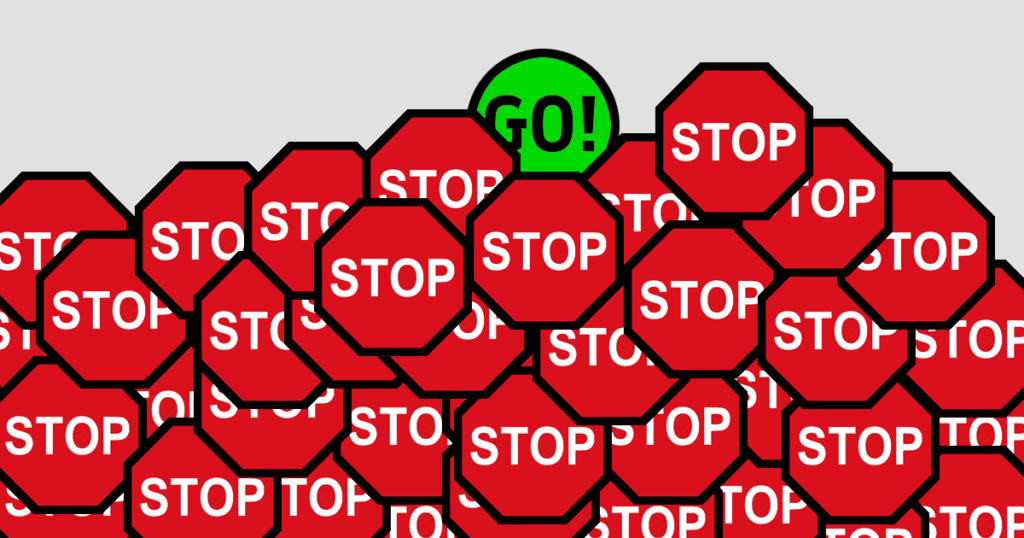Overcoming Buyer Inertia
Rick Gregg July 25,2024 What do you think?

In my last post, I discussed the importance of uncovering extreme customer pain. In part one of this four part series, I will discuss the four frictions that cause innovation headwinds and prevent your customer from buying. These frictions are: 1) Inertia, 2) Effort, 3) Emotion; and 4) Reactance. We’ll start with Inertia this week and progress in order over the next few weeks.
Why We Stick with What We Know
The friction of inertia captures the idea that the human mind is hardwired to favor the familiar and as a result, we resist new ideas – even the simplest ones. In their groundbreaking 2022 book The Human Element, authors Loran Nordgren and David Schonthal observe that “for humans, familiarity breeds liking. We favor the known over the unknown. And that makes sense from an evolutionary perspective. Because things that are familiar have been tried and tested and are thus safer than things that have not. Familiarity means that we have survived contact with it in the past. Our instinctive mind recognizes this, and steers us towards a familiar option.”
We Buy What We Know
Inertia is a major reason why advertising is so essential for product adoption. Search engine optimization (SEO) suggests that the coveted first position or for that matter any position above the fold is the critical factor for determining what people will click on and buy. Studies have shown that brand familiarity plays a far greater role in click rate than people realize. 80 percent of the time, people choose the brand they already know – regardless of where it ranks on the page. This is exactly why it is a waste of time and money for a SaaS startup to rely on and pay for social media advertising until at least a repeatable business model is discovered.
How Inertia Kills Innovation
The principal problem with Inertia is that it breeds inaction. And inaction is precisely what the innovator is fighting against. Inertia leads us to choose the familiar over the potentially better but uncertain options. Even when people are willing to break from the status quo, Inertia limits the options we are willing to consider when pursuing opportunities or solving problems. For example, despite the benefits of diversity, our preference for familiarity leads people to form relationships with individuals who are like themselves. We do this because it is more comfortable. It is easier to trust someone who views the world through the same lens you do. The instinct to favor the familiar suggests that even when we are open to new ideas, innovators and organizations don’t consider all the possible opportunities and solutions, just the familiar ones – those they have tried in the past or fit with the culture.
Overcoming Inertia
Inertia is a friction against innovation and change. To overcome the effects of Inertia, we need to transform the unfamiliar to the familiar. There are two approaches for overcoming Inertia: 1) acclimate the idea; and 2) make it relative. At the MVP stage of our SaaS innovation, acclimation of the idea is most important. There are five strategies for acclimation:
- Repetition. The mere exposure effect is the finding that contact increases liking. Psychologists calls this the illusion of truth effect. It’s the notion that the more we hear a statement, the more likely we are to believe and endorse it.
- Start Small. New ideas vary in the scope of change they require. Some require only incremental adjustment, while others call for substantial disruption. When a significant change is required, initial exposure is often easier to take when given in small doses.
- Find a Familiar Face. Although the message we are selling might be unfamiliar, the messenger doesn’t have to be. We are heavily influenced by who communicates information. People are more likely to listen to a message when it comes from someone they know or someone who’s like themselves.
- Make it Prototypical. Ideas that fit the prototype are generally more familiar (and thus better liked) than those that don’t. When a new idea doesn’t fit the prototype, it causes friction. The brain must work harder to understand it.
- Use Analogies. If people aren’t familiar with an innovation firsthand, compare it to something they are familiar with. This is called analogous comparison. An analogy is simply a comparison that suggests parallels between two things. Analogies work because they make the unfamiliar seem familiar. They help people navigate new territory by making it resemble territory they already know. Think “Its’ like a Roomba for your yard.”
We will be using the four frictions during customer discovery when we develop tests to measure the effectiveness of our customer profile and value proposition for our innovative SaaS offering. Want to learn more? Check out The Human Element book for more information and examples.
The saasmvp Project is dedicated to helping SaaS Entrepreneurs who want to create a repeatable business model that generates revenue with minimal financial risk. We’re excited to help you discover your ideal SaaS customer profile and can’t wait to see what you build!